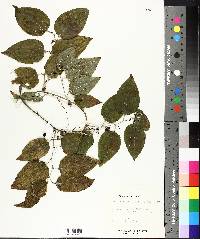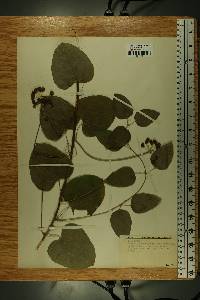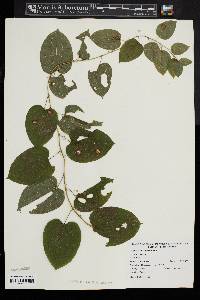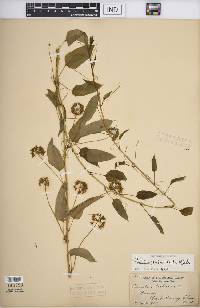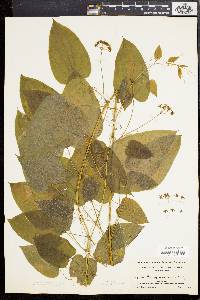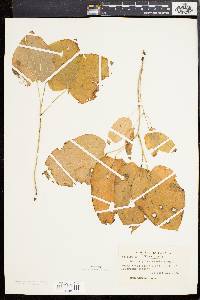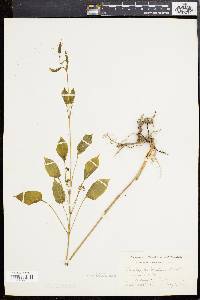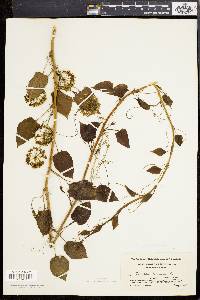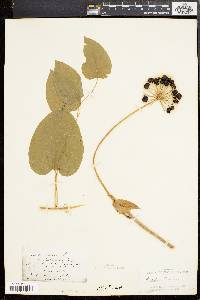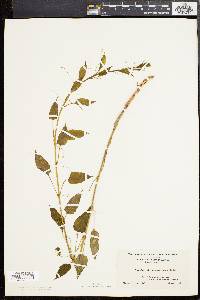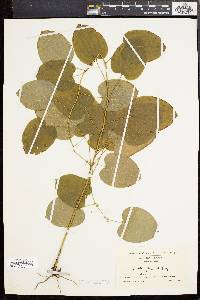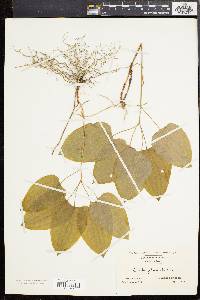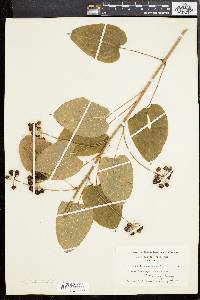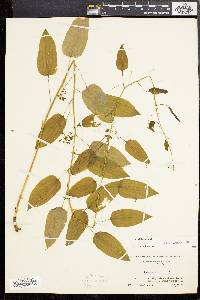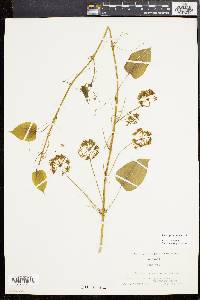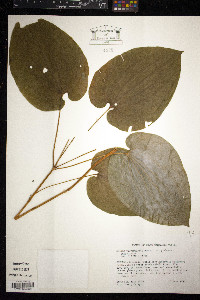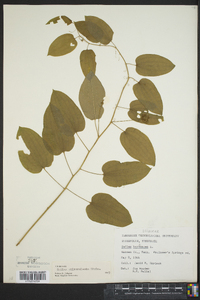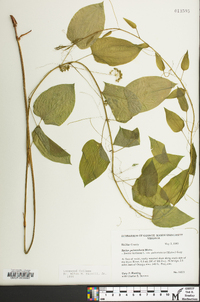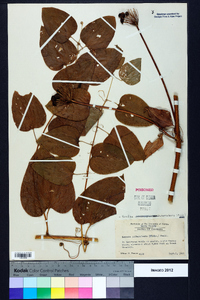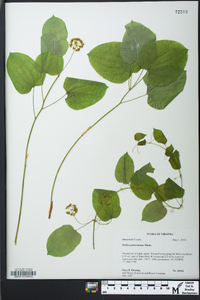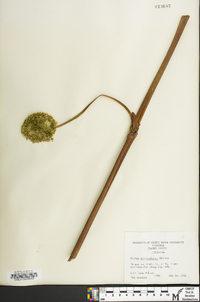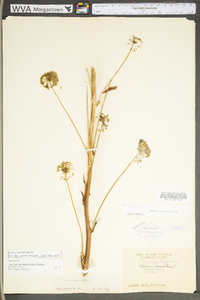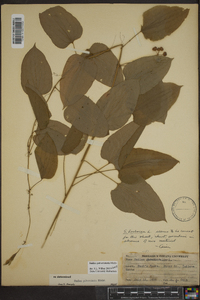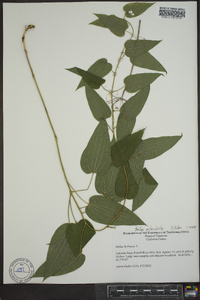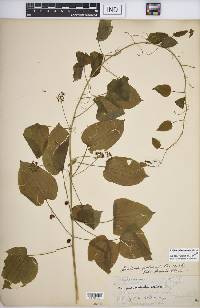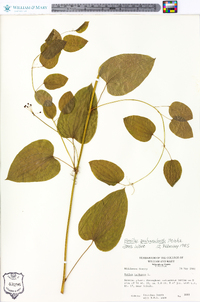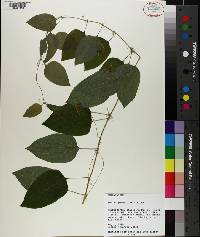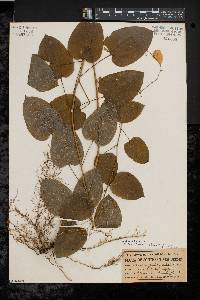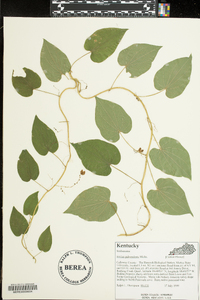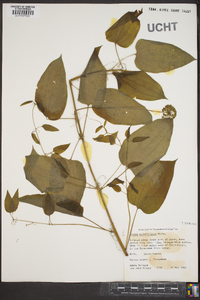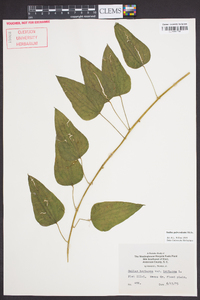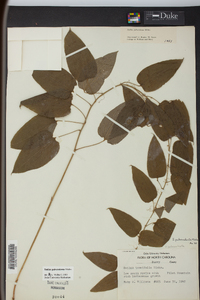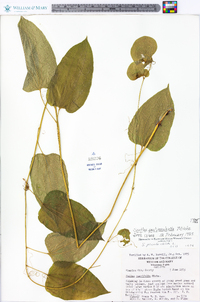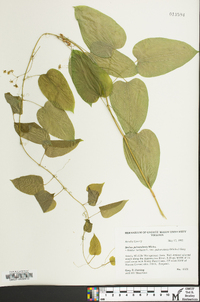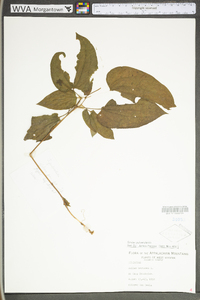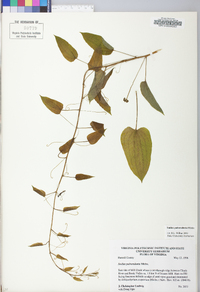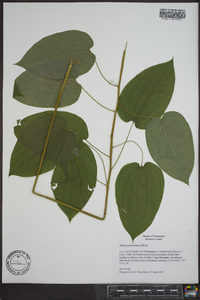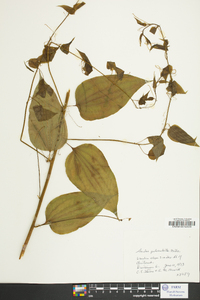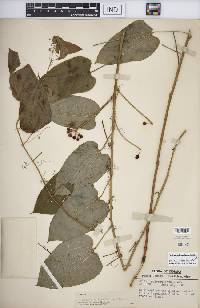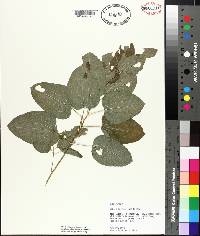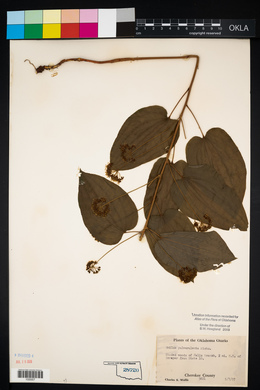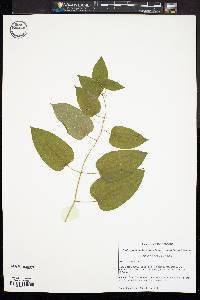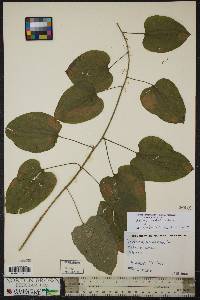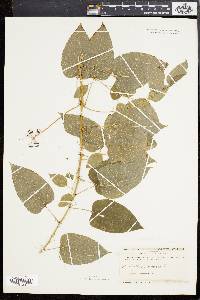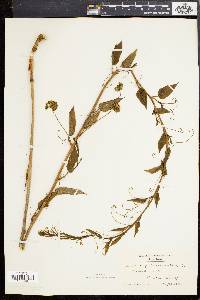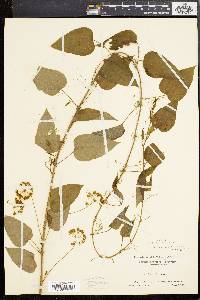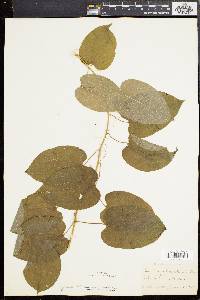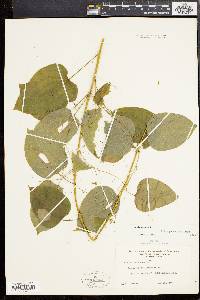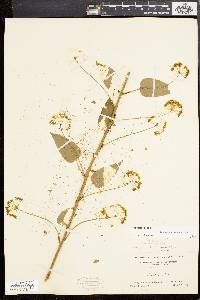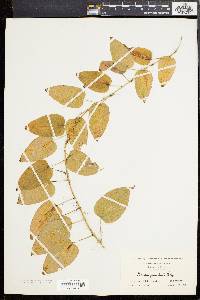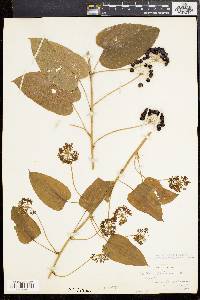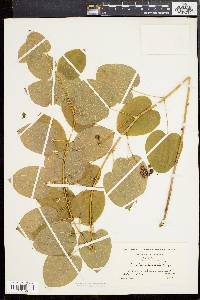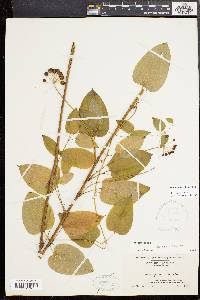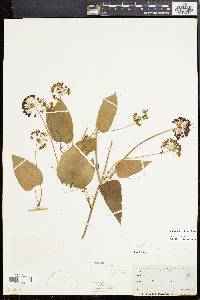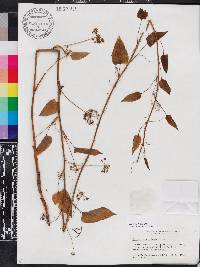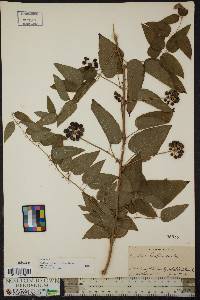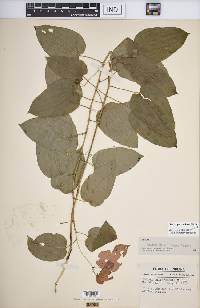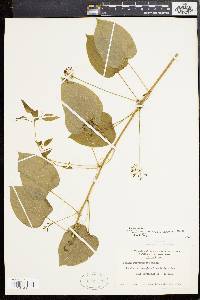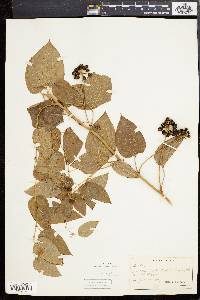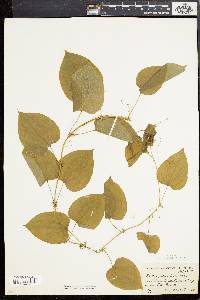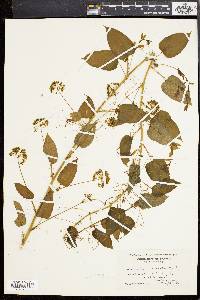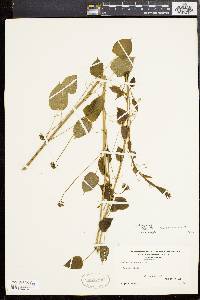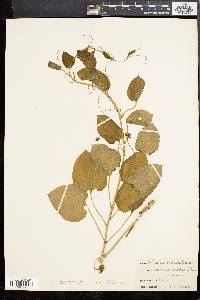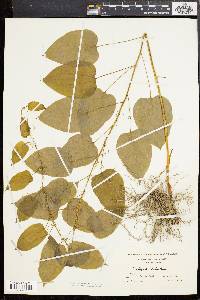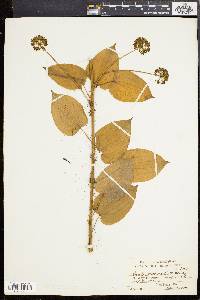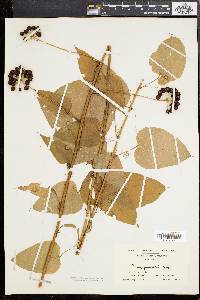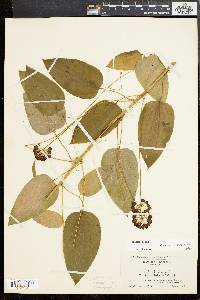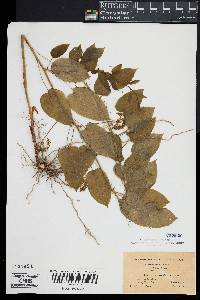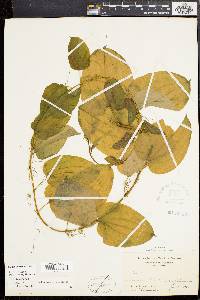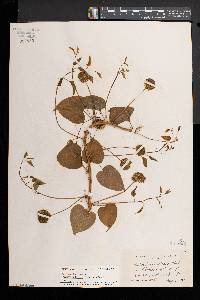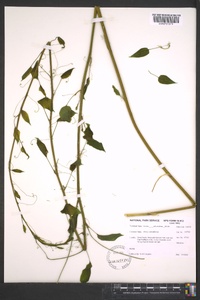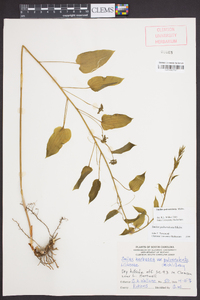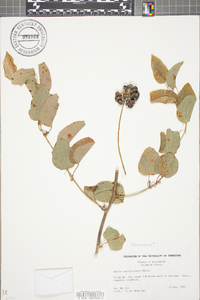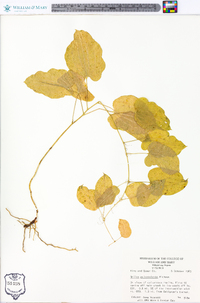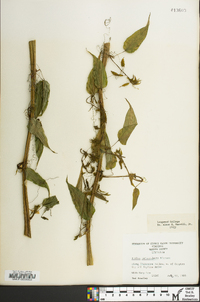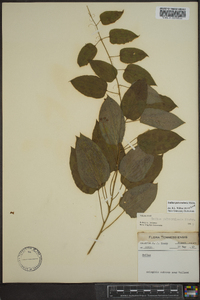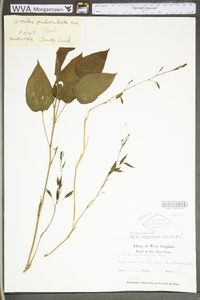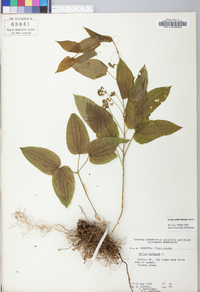
|
|
|
|
Family: Smilacaceae
Downy Carrion-Flower
|
Herbs. Stems annual, climbing, branching, to 2.5 m, herbaceous, glabrous; prickles absent. Leaves evenly distributed; petiole ± equaling blade; tendrils numerous, long, functional; blade lustrous, dark green abaxially, narrowly to broadly ovate, 8-16 × 3.5-9 cm, often with minute, whitish pubescence abaxially mostly on veins, with transparent trichomes, base cordate, margins entire, convex, apex long-acuminate; leaves on branches with oblong, smaller blade. Umbels numerous, axillary to leaves, 10-35-flowered, globose; peduncle equaling or shorter than subtending leaf. Flowers: perianth greenish; tepals 3.5-5 mm; anthers shorter than filaments, ovules (1-)2 per locule; pedicel 0.5-2.2 cm. Berries black, subglobose, 8-10 mm, not glaucous. 2n = 26. Flowering Apr--Jun. Rich woods, thickets, usually in calcareous soils; 0--900 m; Ark., Del., D.C., Ill., Ind., Ky., Md., Minn., Mo., Nebr., N.J., N.Y., N.C., Pa., Tenn., Va., W.Va. The distribution of Smilax pulverulenta is disjunct. The eastern distribution is centered in the mid-Atlantic United States, while the western distribution is centered in the Ozark Plateau of Missouri.
Perennial herbaceous vine to 2.5 m tall Stem: climbing, branching, hairless, lacking prickles, with bracts near base. Leaves: alternate, numerous, stalked, shiny dark green beneath, 8 - 16 cm long, 3.5 - 9 cm wide, narrow to broad egg-shaped with a heart-shaped base and pointed tip, margins convex, typically with five major veins, often with tiny whitish hairs on veins beneath. The leaves of branches are smaller and oblong. Flowers: either male or female, found on separate plants (dioecious), borne on an inflorescence with branches radiating from a common point (umbel). The many umbels are borne axillary to the leaves, each being hemispherical to spherical and having ten to 35 flowers with six greenish tepals 3.5 - 5 mm long. Fruit: a black berry, 8 - 10 mm long, nearly spherical, with three to six seeds. Tendrils: many, borne in leaf axils, long. Similar species: Smilax ecirrhata, Smilax illinoensis, Smilax herbacea, Smilax lasioneura, and Smilax pulverulenta are herbs without prickles. Smilax ecirrhata and S. illinoensis are erect, shorter than 1 m, and have zero to few tendrils and few umbels. Smilax herbacea leaves are hairless beneath, and S. lasionera leaves are dull pale green and hairy beneath. Flowering: April to June Habitat and ecology: Rare in rich woods, thickets, and edges of fields. Occurence in the Chicago region: native Etymology: Smilax is the ancient Greek name of an evergreen oak. Pulverulenta means powdery, referring to its fine hairs. Author: The Morton Arboretum From Flora of Indiana (1940) by Charles C. Deam Infrequent to rare in the southern part of the state where it is usually found in hard, dry soil on wooded slopes, associated with oaks, and rarely in dry, sandy soil. I found it also in a low post oak flat south of Half Moon Pond in the southwestern part of Posey County. There is a specimen in the herbarium of the University of Notre Dame collected by Nieuwland in St. Joseph County that I doubtfully refer to this species. …… Indiana Coefficient of Conservatism: C = 5 Wetland Indicator Status: FACU Diagnostic Traits: branched herbaceous plant to >1 m; prickles lacking; tendrils from many nodes; lower leaf surface pubescent and dark green; petioles = blades; lower inflorescences from blade bearing leaves. |

